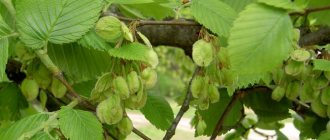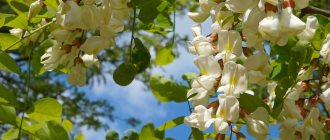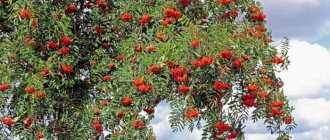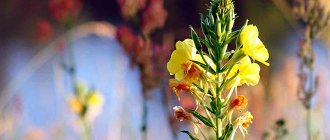Etymology of the name
It turns out that “Elm” is not the only name for the tree. The Latin name for the tree is “ulmus”. In addition, there are common names: Ilm, Berest and Karagach.
Why Elm? The name comes from the fact that in the old days they extracted bast from a tree trunk and knitted rims, sleighs and many other useful things from it.
Distinctive features of the elm tree
If you see in front of you a slender tall tree with smooth bark and a thick dome of leaves, without a doubt you are standing next to an Elm. Moreover, it has very strong roots. This is what helps a tree to be almost eternal for humans. In Russia, the twenty-five meter Elm is popular, with a trunk girth of more than one and a half meters.
It has a brownish-red bark color. In trees that have already seen life, the bark peels off and becomes rougher. In general, the lifespan of a tree is about three hundred years.
Use in landscape design
The elm looks like a mighty, strong tree with a dome-shaped crown. It is the dense foliage that allows it to be used as a barrier against dust, gases, and dirty air for residential areas. Moreover, in addition to such an important practical function, elm forms a beautiful, green landscape.
The crown of elms is often used to create shapes in landscape designs. The density of the branches allows you to cut a wide variety of shapes. Powerful, strong roots of the tree can strengthen the banks of lakes, rivers, and the slopes of ravines. Thus, planting elm, in addition to its decorative function, will fulfill an important, practical role.
Elm is an excellent solution for a personal garden. In addition to the obvious landscaping, it will strengthen the soil. Thanks to this, fertile soils will not slide and will be preserved from weathering and erosion.
When deciding to plant elms, it is important to take into account their subspecies and dimensions. Since the diversity of elm is great, there are both miniature and huge specimens.
So, a tall, spreading tree is not suitable for a small area. And over a large area there will not be enough bushes.
Where can Elm grow?
Not many people know that there are as many as sixteen species of Elm.
You can see their diversity in the following countries:
- Western Siberia;
- Caucasus;
- Southern Urals;
- Kazakhstan;
- Volga region;
- All European countries;
- Scandinavia.
If you decide to grow this tree species at home, then you definitely need to find out in more detail everything related to cultivation. In fact, Elm can be grown in any soil as it can withstand heat but is also tolerant of cold temperatures.
Don’t worry even when your city is hit by a flood or drought - believe me, this plant will withstand any vicissitudes of fate.
It is worth noting one of the excellent abilities of wood - it perfectly retains dust. It is often planted in parks and squares, rivers and lakes, as well as near residential roads. It really cleans the air significantly.
Elm is a plant that flowers and bears fruit. This usually occurs from March to April, and the fruits can be harvested as early as May and June.
Application of wood
Elm wood is very dense, density indicators are about 600 kg/m3. A beautiful texture is visible on the cut of the trunk, the core is light brown, the underbark is pale yellow in color. Elm wood is resistant to rotting and deformation , is difficult to split or saw, and is highly polished.
Due to its properties, elm wood has long been used for the production of wheel rims, dishes, and rocker arms. The material was also used in the construction of bridges and dams, and in equipping mines and cellars. Currently, elm wood is used in the form of veneer for artistic decoration of premises.
Elm is used to make parquet, wooden furniture parts, frames, and panels. Often the material is combined with lower quality wood species to give a more aesthetic appearance to the products.
Folk signs associated with Elm
A rather important thing that is worth mentioning is the folk signs and magical properties of elm, which our ancestors believed in and our descendants continue to believe in.
Let's take a look at the most popular:
- In Rus', it was believed that by picking an Elm branch and placing it in your home, you could “invite” good luck to yourself. If one of the household was going to war, then a branch of this tree could also give him courage or strength. If someone simply moved to a new place, then they also necessarily took a branch of this tree with them.
- There is also an opinion that it is a symbol of new life, probably due to the fact that Elm takes a long time to grow. Having planted it now, your great-grandchildren will still water it, and their great-grandchildren will trim its branches.
- In some religions, for example, in Christianity, it is considered a sacred tree. It should not be cut down or harmed, for example, carving obscene words on the bark, which is quite common among young people.
- In England, a sprig of Elm is combined with a grapevine when newlyweds start a family. The tandem is placed in a vase, since this union symbolizes the newlyweds: a reliable, strong Elm (husband) and a sophisticated vine (wife).
Medicinal properties for humans
In fact, there are a lot of medicinal properties here. Let's start with the fact that it can have anti-inflammatory, antimicrobial, wound-healing and diuretic effects. In what form can it be used? You can make decoctions from leaves and bark.
Also make baths, tinctures and teas. Do not forget that a decoction of the leaves is used in case of joint disease. If you suffer from any skin disease, it can also help you.
The main diseases for which you should use Elm in your treatment:
- Syphilis;
- Gastrointestinal diseases;
- Normalization of metabolism;
- Normalization of the cardiovascular system;
- Thyroid diseases.
It is worth noting that it is also used as a sedative.
Planting seedlings
You can make your work easier by purchasing ready-made seedlings. Planting and caring for seedlings includes steps such as:
- Planting in open ground. The seedling should be placed in a prepared hole in soil that has been previously moistened and fertilized.
- Constant hydration.
- Loosening the soil around the root system.
- Wrapping up for the winter from the harsh effects of frost.
- Timely pruning (you need to start at 4 years old). It is best to prune the crown from October to April.
How to prepare a decoction
The root of this plant is used to prepare a decoction, which is used as a lotion for eczema and purulent wounds.
The decoction is also considered effective in combating the most dangerous disease in the world - cancer.
- To prepare a decoction, pour boiling water over the bark or roots and simmer briefly over the fire.
- Then give the resulting liquid time to brew; it should decrease several times.
- Of course, the resulting liquid will be very strong, so you will have to add water, that is, dilute it.
- Next, strain the resulting tea for subsequent oral administration no more than twice a day. The maximum you can take is one tablespoon.
Breeding
Elms reproduce by self-seeding. Their seeds ripen in May-June and lose their viability in a short time. Therefore, only freshly collected material will be suitable for planting. In nature, they can also reproduce by shoots and root suckers, but for amateur nurseries such methods are ineffective when breeding trees.
It is recommended to store elm seeds in conditions of good ventilation for no more than one week until sowing. A couple of days before planting, they are moistened and treated with a fungicide. Planting sites do not require preliminary preparation, but you can add a little mineral fertilizer to the soil. The seeds are sown in rows at a distance of 20-30 cm between the holes at a shallow depth - only 1 cm. They are covered on top with hay, moss or a thin layer of soil and watered well. Shoots appear within a week. In the first year of life, elms grow up to 15 cm, in subsequent years they add up to 40 cm.
Interesting Facts
Let's move on to a couple of interesting facts related to this ancient plant.
- In Korea, there is still an Elm tree that is more than 800 years old. This giant reaches a height of seven meters and a diameter of about two.
- In Moscow, an old, decrepit representation of this type of wood has been preserved. He “lived” long enough and, according to rumors, survived the fire of 1812. But in the summer of 2010, a misfortune happened - it dried up due to abnormal heat.
- In the Middle Ages they were used in vineyards as supports. For the ancient Greeks, Elm was long associated with the god of wine, Dionysus.
- In China, Elm fruits are used as an ingredient for salad.
- The bridge in London was built from Elm wood.
general description
The history of elm goes back several million years, so the tree belongs to the relict species. Trees grow both singly and as part of mixed forests; they prefer fertile soils, but also grow well on poor soils. Elms do not suffer from a lack of sunlight; growing to a height of 40 m, they themselves create shade for low-growing plants. The elm trunk reaches two meters in diameter, but there are low-growing varieties that are close to shrubs.
The trunks of young trees are covered with smooth light brown bark; older trees can be distinguished by their dark, rough bark with deep vertical grooves. Due to the fact that elm bark is very gnarled, insect pests or parasitic fungi easily settle in it.
Elm leaves cannot be confused with others : they are jagged, oval in shape, and lined with relief parallel stripes from the center to the sides. The size of the leaves is 4−20 cm, the arrangement is alternate on short cuttings. With the arrival of autumn, the dark green color of the foliage gives way to red-brown hues, and yellowed leaves fall off very quickly.
Flowering and fruiting of the tree occur in April, when the leaves have not blossomed.
Small yellowish flowers are collected in bunches, the fruits are winged nuts. The ripening of the fruits ends at the end of May, and the dry lionfish are carried with a rustling sound throughout the area by the wind. When placed in favorable soil, the seeds germinate within a few days.











